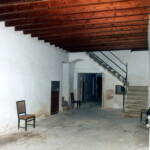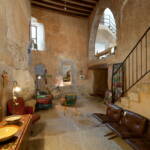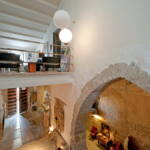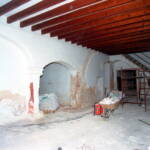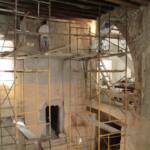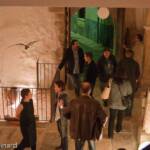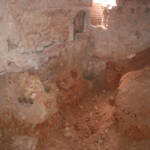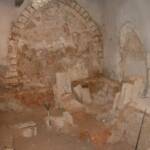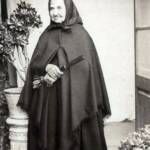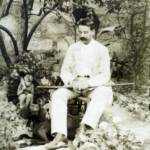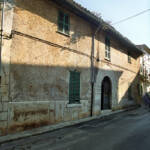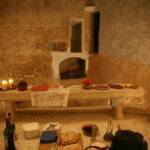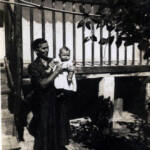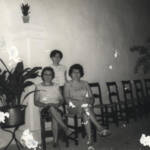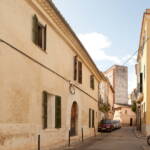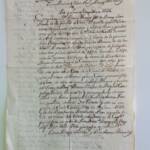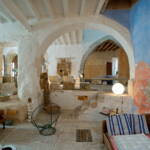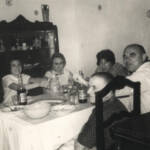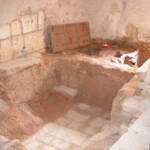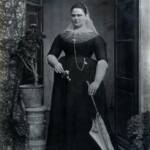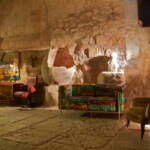
It was in 2002, I think I remember that one day in June at around three in the afternoon; Robert and I had met in Inca with Sebastián Mora, owner of a house that was for sale in the city.
We were walking from the city centre and seeing that we had moved a little away from the main streets, I said to Roberto as a warning: “It’s very far from the centre, this house could be nice…”. At that time we were living and working in Pollença; we were looking for a house to restore, live in and at the same time use as a studio or showroom.

When we entered from Gerrers Street and found ourselves facing the façade of Can Monroig, I remained silent. It is difficult to explain what we felt when we walked through the door for the first time. Despite being divided into many rooms, the house was huge and spacious, with a different layout than usual - the arches perpendicular to the façade and not parallel; a pointed arch could be seen in a wall that separated us from the neighbouring house - coup de coeur! -; one of the rooms had a stone slab floor, the others had old clay floors; the walls were whitewashed and the beams were wooden; at the back there was a patio; on the first floor there were three huge rooms...
It was a fairly “pure” house and had certainly not been renovated in the last 100 years.
It had not been inhabited for 25 years and it was noticeable: damp, peeling walls, water ingress into the roof, a façade in poor condition, the patio porch invaded by vegetation… For two lovers of ruins like us it was a real gem. It took us no more than twenty minutes to decide that we wanted to buy it.
The house belonged to the Salas family since the 16th century and was better known as Can Monroig d'abaix to differentiate it from Can Monroig de Sa plaça - now gone - which was near the town hall.

Monroig (Muntrog or Montroig) was one of the knights who accompanied Jaume I in the conquest of Mallorca:
“Montrog (Arnaldo) was granted in the area of Inca the farms Beriracha and Benirocabli of six jovadas and a mill of the fountain of Canet called Aboember by undivided with the king. Another Araldo de Monroig perhaps the same in 1290 was sworn in from the city of Mallorca by the class of artisans.” Memory of the settlers of Mallorca.
“Four people were appointed, two Christians and two Jews, to agree on the sales and rental prices of the houses that would be the Call, but the University of Inca complained about the prices, writing to the king and paralyzing the entire process, leaving it suspended for a period of 10 years, when the governor gave the order to execute the sentence and continue with the Call process, but it was not until 1363 with the new governor Bernardo de Tous that it began to be executed, a new valuation commission was appointed, made up of Montroig and Palou (Christians) with Faquim and Fallux (Jews).” Wikipedia, Jewish neighborhood of Inca.
The restoration (see more)
As incredible as it may seem, we bought Can Monroig without knowing how we were going to finance this project. We were bold, naive and quite unconscious, but we have never denied it.
It took us two years to start the work, another two to restore the roofs, walls and floors, knock down partitions or open up spaces; we freed up a large Gothic arch that appeared during the renovation, we unearthed an oven and several stone cisterns; we lowered the floor below street level…
In 2006 we moved into the house without having finished the works; a couple of habitable rooms, a temporary kitchen and a bathroom were enough for us; the rest of the house was nearing completion, the ground floor and basement had been dug down to ground level.
We spent the first winter without glass in the windows or doors on the ground floor.


At the end of that year we realised that we could not finish the work if we had to pay someone else to carry it out. After a few weeks of total discouragement we decided to continue the work ourselves.
Ultimately, the house would come out on top. There is always a difference between directing a project and wanting to convey to others the final effect you are looking for and doing it yourself. The walls worked by hand, the floors transformed stone by stone, the beams painted with a brush and not with a paintbrush, the restored façade imitating the old patina... a thousand and one details and a special interest in making the work artisanal and respectful of the old gave the ground floor of Can Monroig a special charm, as if we had not touched anything here and everything had been like this for years.
On one occasion, a neighbour from Inca knocked on our door and asked to visit the house; her daughter was preparing a project on Gothic architecture in Inca and wanted to photograph our arches. At that time we had not finished the restoration but it was already in its final phase. The mother approached me, very kindly and in an understanding tone she said: “this house is beautiful but you are going to have to invest a lot of money to fix it up”. I was stunned; we had been restoring Can Monroig for five years!!!
After five years of work and a lot of effort, in November 2009 and coinciding with “Dimecres Bo” we inaugurated Can Monroig with a party to which we invited some friends. During “Dijous Bo” (main festival of Inca) the word spread that the home and we were pleasantly surprised by the number of people who came to see it that day.

We had finished the restoration of a house that we wanted to be our calling card, a benchmark for the sustainable restoration and recovery of civil heritage that we are dedicated to; we had an incredible house to show, with work that we were proud of, but there were no clients because we were in the midst of an economic crisis.
Marie-Noëlle Ginard Féron
Robert Lopez Hinton
Can Monroig
Inca, Majorca
August 18, 2014


